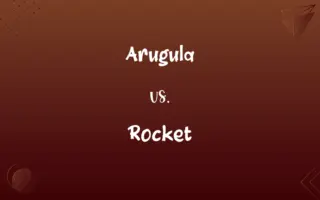Octant vs. Sextant: Know the Difference

By Shumaila Saeed || Updated on December 25, 2023
An "Octant" is a measuring instrument used in navigation that covers an eighth of a circle (45 degrees), while a "Sextant" covers a sixth of a circle (60 degrees) and is also used in navigation.

Key Differences
The octant, a historical navigational tool, measures angles up to 45 degrees. The sextant, a more advanced tool, measures angles up to 60 degrees, allowing for more precise navigation.
Shumaila Saeed
Nov 20, 2023
Octants, made primarily in the 18th century, were the predecessors of sextants. Sextants, developed later, offered greater accuracy and range in celestial navigation.
Shumaila Saeed
Nov 20, 2023
The octant uses a smaller arc, limiting its measurement capabilities compared to the sextant. Sextants have a larger arc, enabling more extensive angle measurements.
Shumaila Saeed
Nov 20, 2023
Octants were often constructed from wood and brass, reflecting the technology of their time. Modern sextants are typically made of more durable materials like aluminum and stainless steel.
Shumaila Saeed
Nov 20, 2023
The octant was a crucial tool for early explorers, despite its limitations. The sextant, with its enhanced capabilities, became indispensable in the age of global maritime navigation.
Shumaila Saeed
Nov 20, 2023
ADVERTISEMENT
Comparison Chart
Historical Period
Primarily 18th century
Developed later, more commonly used in 19th century
Shumaila Saeed
Nov 20, 2023
Measurement Capabilities
Limited due to smaller arc
Greater accuracy with larger arc
Shumaila Saeed
Nov 20, 2023
Construction Materials
Originally wood and brass
Later models use aluminum, stainless steel
Shumaila Saeed
Nov 20, 2023
Significance in Navigation
Crucial in early exploration
Became indispensable for global navigation
Shumaila Saeed
Nov 20, 2023
ADVERTISEMENT
Octant and Sextant Definitions
Octant
A navigational instrument measuring up to 45 degrees.
He used an octant to navigate the ship in the early 1700s.
Shumaila Saeed
Nov 20, 2023
Sextant
Represents one-sixth of a circle.
In geometry, we used the concept of a sextant to solve problems.
Shumaila Saeed
Nov 20, 2023
Octant
Represents one-eighth of a circle.
The octant of the circle was marked for the math problem.
Shumaila Saeed
Nov 20, 2023
Sextant
Typically made of durable materials like aluminum.
His sextant was made of high-grade aluminum for maritime journeys.
Shumaila Saeed
Nov 20, 2023
Octant
A historical device used in navigation.
The museum's octant collection showcased maritime history.
Shumaila Saeed
Nov 20, 2023
ADVERTISEMENT
Sextant
Essential for modern celestial navigation.
Modern sailors rely on the sextant for open-sea navigation.
Shumaila Saeed
Nov 20, 2023
Octant
Often made of wood and brass.
The antique octant was crafted beautifully with brass detailing.
Shumaila Saeed
Nov 20, 2023
Sextant
Enhanced navigational accuracy compared to its predecessors.
The sextant offered more precise measurements than the octant.
Shumaila Saeed
Nov 20, 2023
Sextant
A navigational instrument containing a graduated 60-degree arc, used for measuring the altitudes of celestial bodies for use in determining the latitude and longitude of the observer.
Shumaila Saeed
Oct 19, 2023
Octant
The area enclosed by two radii at a 45° angle and the intersected arc.
Shumaila Saeed
Oct 19, 2023
Sextant
(nautical) A navigational device for deriving angular distances between objects so as to determine latitude and longitude.
Shumaila Saeed
Oct 19, 2023
Octant
An instrument based on the principle of the sextant but employing only a 45° angle, used as an aid in navigation.
Shumaila Saeed
Oct 19, 2023
Sextant
(geometry) One sixth of a circle or disc; a sector with an angle of 60°.
Shumaila Saeed
Oct 19, 2023
Octant
(Astronomy) The position of a celestial body when it is separated from another by a 45° angle.
Shumaila Saeed
Oct 19, 2023
Sextant
(dentistry) One of six groups of adjacent teeth, excluding the wisdom teeth. The front sextants go from canine to canine, and there are sextants on the right and left of these. See w:Periodontal examination.
Shumaila Saeed
Oct 19, 2023
Octant
One of eight parts into which three-dimensional space is divided by three usually perpendicular coordinate planes.
Shumaila Saeed
Oct 19, 2023
Sextant
An instrument for measuring angular distances between objects, - used esp. at sea, for ascertaining the latitude and longitude. It is constructed on the same optical principle as Hadley's quadrant, but usually of metal, with a nicer graduation, telescopic sight, and its arc the sixth, and sometimes the third, part of a circle. See Quadrant.
Shumaila Saeed
Oct 19, 2023
Octant
(astrology) The aspect of two planets that are 45°, or one-eighth of a circle, apart.
Shumaila Saeed
Oct 19, 2023
Octant
(geometry) The eighth part of a disc; a sector of 45 degrees; half a quadrant.
Shumaila Saeed
Oct 19, 2023
Octant
(nautical) An instrument for measuring angles, particularly of elevation.
Shumaila Saeed
Oct 19, 2023
Sextant
A measuring instrument for measuring the angular distance between celestial objects; resembles an octant
Shumaila Saeed
Oct 19, 2023
Sextant
A tool for measuring angles up to 60 degrees in navigation.
He accurately measured the star's angle using a sextant.
Shumaila Saeed
Nov 20, 2023
Octant
The position or aspect of a heavenly body, as the moon or a planet, when half way between conjunction, or opposition, and quadrature, or distant from another body 45 degrees.
Shumaila Saeed
Oct 19, 2023
Octant
An instrument for measuring angles (generally called a quadrant), having an arc which measures up to 9O°, but being itself the eighth part of a circle. Cf. Sextant.
Shumaila Saeed
Oct 19, 2023
Octant
One of the eight parts into which a space is divided by three coördinate planes.
Shumaila Saeed
Oct 19, 2023
Octant
A measuring instrument for measuring angles to a celestial body; similar to a sextant but with 45 degree calibration
Shumaila Saeed
Oct 19, 2023
Octant
An early tool for celestial navigation.
The octant was crucial for sailors before the invention of the sextant.
Shumaila Saeed
Nov 20, 2023
Repeatedly Asked Queries
What is the primary use of an octant?
For measuring angles up to 45 degrees in navigation.
Shumaila Saeed
Nov 20, 2023
How accurate is a sextant compared to an octant?
Sextants are generally more accurate.
Shumaila Saeed
Nov 20, 2023
What materials were octants traditionally made from?
Mainly wood and brass.
Shumaila Saeed
Nov 20, 2023
Are sextants more durable than octants?
Generally, yes, due to modern materials.
Shumaila Saeed
Nov 20, 2023
Was the octant widely used in the 18th century?
Yes, especially by sailors and explorers.
Shumaila Saeed
Nov 20, 2023
Are sextants used in modern navigation?
Yes, especially in celestial navigation.
Shumaila Saeed
Nov 20, 2023
Is learning to use a sextant complex?
It requires practice and understanding of navigation principles.
Shumaila Saeed
Nov 20, 2023
How do sextants contribute to safe sea travel?
By allowing precise navigation using celestial bodies.
Shumaila Saeed
Nov 20, 2023
What makes the sextant more advanced than the octant?
Its larger angular measurement range and improved accuracy.
Shumaila Saeed
Nov 20, 2023
Were octants used for star observations?
Yes, for basic celestial navigation.
Shumaila Saeed
Nov 20, 2023
Are there digital versions of sextants?
Modern navigation often uses digital tools, but traditional sextants still exist.
Shumaila Saeed
Nov 20, 2023
Did the octant have limitations in navigation?
Yes, due to its smaller measurement range.
Shumaila Saeed
Nov 20, 2023
Can octants and sextants be found in museums?
Yes, they are often displayed as part of maritime history.
Shumaila Saeed
Nov 20, 2023
Is the octant considered a maritime artifact?
Yes, it's significant in maritime history.
Shumaila Saeed
Nov 20, 2023
How has the sextant impacted navigation?
It revolutionized precision in maritime navigation.
Shumaila Saeed
Nov 20, 2023
Share this page
Link for your blog / website
HTML
Link to share via messenger
About Author
Written by
Shumaila SaeedShumaila Saeed, an expert content creator with 6 years of experience, specializes in distilling complex topics into easily digestible comparisons, shining a light on the nuances that both inform and educate readers with clarity and accuracy.








































































